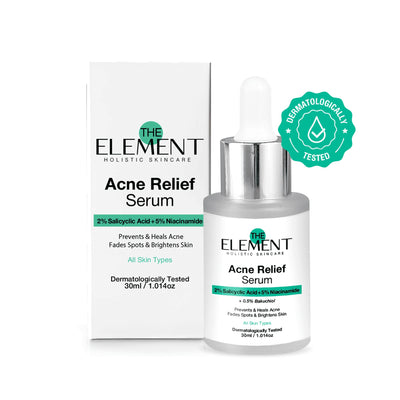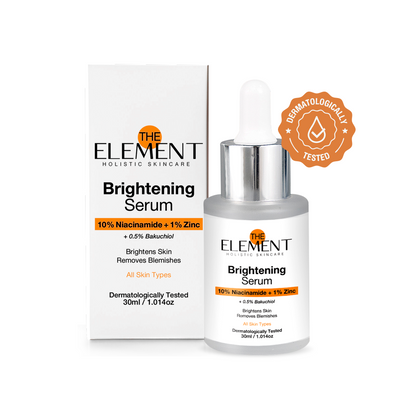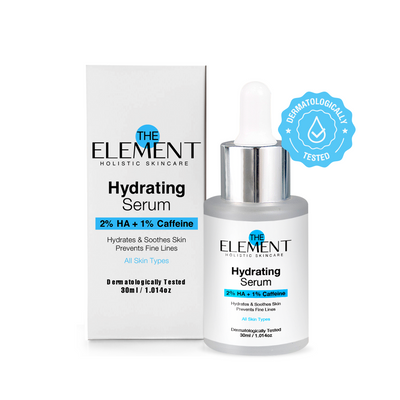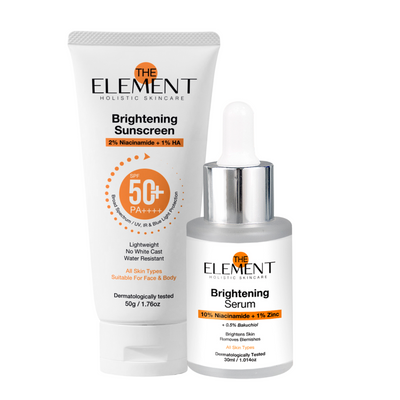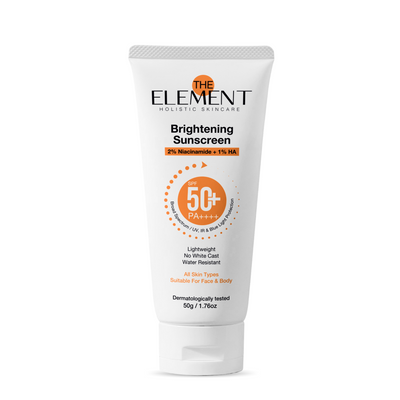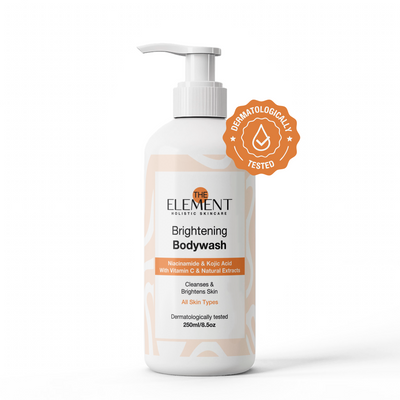Zits on Chin: Causes, Types, Fast Relief, and Long-Term Fixes (With Safe Options for Big, Painful, or Recurring Breakouts)
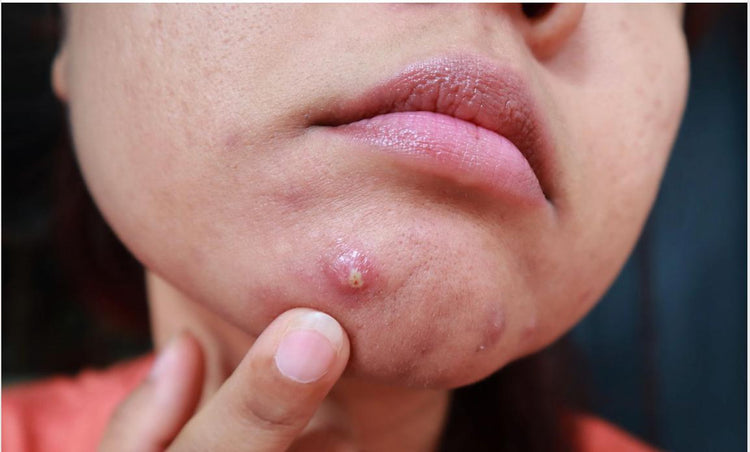
Introduction
Chin breakouts can feel stubborn, painful, and—let’s be real—badly timed. If you’re facing zits on chin that are hard, swollen, or keep returning (especially before your period), you’re not imagining it. Chin and jawline acne are commonly linked to hormones and oil production, which is why you may see a big zit on chin, a cyst zit on chin, or even a patch of pimples on chin that flares in cycles. In this guide, you’ll learn what causes different types of zits on the chin, how to calm a huge under-the-skin pimple on chin safely, and the best products and routines to prevent future flare-ups—without harsh over-drying.
What makes zits on the chin so common?
Chin breakouts tend to be influenced by hormones and stress. As hormone levels fluctuate, oil (sebum) increases, pores clog, and inflammation builds—especially around the chin and jawline. This is a hallmark pattern of hormonal zits on chin and adult acne. Dermatology resources confirm that hormonal changes and stress can trigger excess sebum and inflammation that underlie these breakouts, and that treatment depends on severity and type of lesions like papules, pustules, or cysts. See guidance from Cleveland Clinic on hormonal acne triggers and treatments, including topical retinoids, benzoyl peroxide, antibiotics, and in-office care for cysts such as steroid injections: Cleveland Clinic. The American Academy of Dermatology also notes fluctuations, stress, certain products, and picking as common aggravators of adult acne: American Academy of Dermatology (AAD).
How to tell what kind of chin pimple you have
Chin breakouts show up in different ways. Correctly identifying yours helps you choose the right treatment.
- Tiny zits on chin or small zits on chin: Often whiteheads or blackheads. Usually respond to gentle exfoliation and pore-clearing ingredients.
- Painful zit on chin or swollen zit on chin: Inflammatory papules or pustules. Think red, sore, sometimes with a white center.
- Hard zit on chin, underground zit on chin, or cyst zit on chin: Deep, tender nodules or cysts under the skin. These do not come to a head easily and are prone to scarring—avoid squeezing.
- Ingrown zit on chin: Can happen with hair removal or shaving; looks like a painful bump with a trapped hair.
- Recurring zit on chin or zits on chin line: Breakouts that cycle with stress, diet changes, or menstrual cycles suggest a hormonal component.
Dermatology guidance recognizes these lesion types and recommends tailoring treatment to severity—from topical retinoids and benzoyl peroxide to oral therapies and, for cystic lesions, in-office steroid injections when appropriate. Sources: Cleveland Clinic, AAD.
Why are hormonal zits on chin so stubborn?
Chin and jawline are rich in oil glands responsive to androgens. Around periods, in pregnancy, during perimenopause, or with certain birth control changes, many people notice huge pimple on chin or a patch of pimples on chin. Stress can worsen oil output and inflammation. Expert overviews link adult jawline/chin acne patterns with hormonal influences and relative androgen activity in the skin, even when blood tests are normal.
The right routine for zits on the chin (daily and weekly)
A clear, consistent routine helps with everything from tiny zits on chin to recurring breakouts.
- Cleanse gently twice daily: Use a non-comedogenic, pH-balanced cleanser. Over-washing or scrubbing can worsen redness and drive more oil production.
- Treat pores daily: Topicals that help include salicylic acid (BHA) to decongest
- Calm inflammation: Niacinamide helps redness and barrier function; azelaic acid targets clogging and pigment.
- Moisturize: Choose a lightweight, non-comedogenic moisturizer to maintain barrier health so treatments don’t irritate.
- Sunscreen every morning: Breakouts worsen with UV and post-acne marks linger without SPF.
If you want a streamlined active that targets clogged pores and inflammation on the chin, consider the Acne Relief Serum from The Element Skin. It’s designed to reduce blemishes and help prevent future breakouts while supporting the skin barrier—useful whether you’re tackling a big zit on chin or a recurring patch of pimples. Apply after cleansing and before moisturizer. See details here: https://theelement.skin/products/acne-relief-serum
Tip for ingrown zit on chin: After warm compresses, a leave-on salicylic acid product can help free trapped hairs. Avoid picking, which can cause dark marks or scars.
What to do for a huge under-the-skin pimple on chin (fast relief)
When you feel that underground zit on chin forming—hard, sore, and deep—act early.
- Ice it for 5–10 minutes a few times a day to reduce swelling.
- Apply a thin layer of 2.5% benzoyl peroxide or a sulfur spot treatment to reduce bacteria and inflammation.
- Use a hydrocolloid dot overnight if there’s any surface fluid; for deep cysts, a microdart patch with salicylic/retinoid/tea tree can help, but avoid harsh combinations if your skin is sensitive.
- Do not attempt popping pimples on chin if they’re deep or cystic. Popping a cyst zit on chin often drives inflammation deeper, increases pain, and raises the risk of scarring.
- For urgent events, dermatologists can inject a tiny amount of steroid into a large cyst to flatten it within 24–48 hours. This is an in-office procedure supported by clinical guidelines for cystic acne care: Cleveland Clinic.
Is zit popping on chin ever okay?
If a pimple has a clear white or yellow head, is near the surface, and isn’t painful, you can sometimes safely extract at home with caution. However, dermatology sources emphasize that squeezing can worsen inflammation, cause scarring, and spread bacteria—especially on the chin where cysts are common. If you try at-home extraction, follow strict hygiene and stop if there’s resistance. Otherwise, defer to a professional. For broader guidance on adult acne management and when to see a dermatologist, see the AAD: AAD.
When zits on chin keep coming back
A recurring zit on chin, especially in a chin line pattern, points to triggers you can refine and possibly hormonal involvement.
Smart adjustments include:
- Audit products: Use only non-comedogenic skincare and makeup; avoid heavy occlusives on the chin if you’re breakout-prone.
- Manage friction: Masks, helmet straps, and chin straps can cause mechanical acne; wash fabrics regularly and minimize rubbing.
- Steady routine: Retinoids need 6–12 weeks for full effect; consistency beats chasing quick fixes.
- Lifestyle pillars: Sleep, stress management, and a diet with stable blood sugar can help some people.
- Track cycles: If flares cluster premenstrually, ask your dermatologist about options like topical retinoids, benzoyl peroxide routines, spironolactone, or certain combined oral contraceptives when appropriate. Clinical sources note that treatment choice depends on severity and individual health history: Cleveland Clinic.
Product guide for every kind of chin breakout
- Tiny/small zits on chin: Salicylic acid 0.5–2% leave-on, niacinamide 2–5%, nightly retinoid.
- Painful or swollen zits on chin: Add benzoyl peroxide 2.5% as a short-contact wash or thin leave-on layer; consider niacinamide for inflammation and discoloration.
- Hard or cyst zits on chin: Retinoid nightly for prevention, ice, targeted benzoyl peroxide or sulfur for flare control; see a pro for steroid injection if severe.
- Ingrown zit on chin: Gentle BHA, warm compress, avoid aggressive tweezing or picking.
- Patch of pimples on chin: Simplify routine, use a balanced active serum like the Acne Relief Serum from The Element Skin, and avoid over-layering multiple harsh actives that can over-dry the area: https://theelement.skin/products/acne-relief-serum
If you use multiple actives, introduce one at a time and space them out (for example, benzoyl peroxide in the morning, retinoid at night) to minimize irritation.
Expert insights you can use today
Board-certified dermatologists consistently recommend starting with non-comedogenic basics, using evidence-backed topicals (retinoids, benzoyl peroxide, salicylic acid), and seeking professional care for cystic or scarring acne. Clinical resources emphasize that:
- Hormone fluctuations and stress can increase sebum and clogging.
- Picking worsens acne and risks scars and hyperpigmentation.
- Consistent use of a retinoid and acne-focused topicals for at least 6–12 weeks is key.
- Cystic lesions may need in-office procedures or prescription therapies.
References: Cleveland Clinic, AAD.
The benefits and challenges of treating chin acne
Benefits of a tailored routine: fewer breakouts, less pain and swelling, and reduced risk of dark marks and scarring. Balanced products support your barrier and allow long-term use. Challenges include identifying triggers, resisting the urge to pop, and sticking with treatments long enough to work. The future of acne care includes more microbiome-smart formulations, targeted anti-inflammatory actives, and personalized regimens that combine gentle daily products with occasional professional treatments when needed.
How this connects to all skincare products: look for “non-comedogenic,” “fragrance-free,” and evidence-backed ingredients. Even hydrating serums, sunscreens, and makeup should be vetted for acne-prone skin. A routine that harmonizes treatment with barrier support is more sustainable—and more effective.
How to prevent dark marks and scars on the chin
- Treat early: Start anti-inflammatory steps at the first sign of swelling.
- Don’t pick: Especially with a huge zit on chin or underground cyst—see a pro if it’s severe.
- Use SPF daily: Sunscreen limits post-inflammatory hyperpigmentation.
- Add niacinamide: It helps fade marks over time.
- Consider professional care: Chemical peels, microneedling, or laser for resistant marks—discuss timing with your dermatologist once acne is controlled.
When to see a dermatologist
- You have frequent cyst zit on chin, severe pain, or scarring.
- Pimples persist despite 8–12 weeks of consistent topical treatment.
- You suspect a hormonal pattern tied to menstrual cycles or you have signs of a hormonal disorder.
Clinical references for adult acne care and indications for medical treatment: AAD, Cleveland Clinic.
Acne Relief Serum by The Element Skin
If you want a focused formula to help decongest pores, reduce redness, and support your skin’s barrier on the chin, check out The Element Skin’s Acne Relief Serum. It’s designed for acne-prone areas like the chin and jawline and pairs well with a simple cleanser, moisturizer, and sunscreen. Apply on clean, dry skin once daily (or as directed), and follow with moisturizer. See the product and usage details here: https://theelement.skin/products/acne-relief-serum
Conclusion
Zits on the chin can be frustrating—especially when they’re big, painful, or keep coming back. A smart, gentle routine plus evidence-based actives makes a real difference. For deep or recurring outbreaks, partner with a dermatologist to prevent scars and find a plan that fits your skin and lifestyle.
Ready to build a chin-acne routine that actually works? Start with a gentle cleanser, daily sunscreen, and a targeted blemish serum like The Element Skin’s Acne Relief Serum: https://theelement.skin/products/acne-relief-serum. If your breakouts are severe or cystic, book a derm visit for personalized care.

